
Dr. Aqeel Shakir
Lec. 1
GANGRENE
Tues. 24 / 2 / 2015
DONE BY : Ali Kareem
مكتب اشور لالستنساخ
2014 – 2015
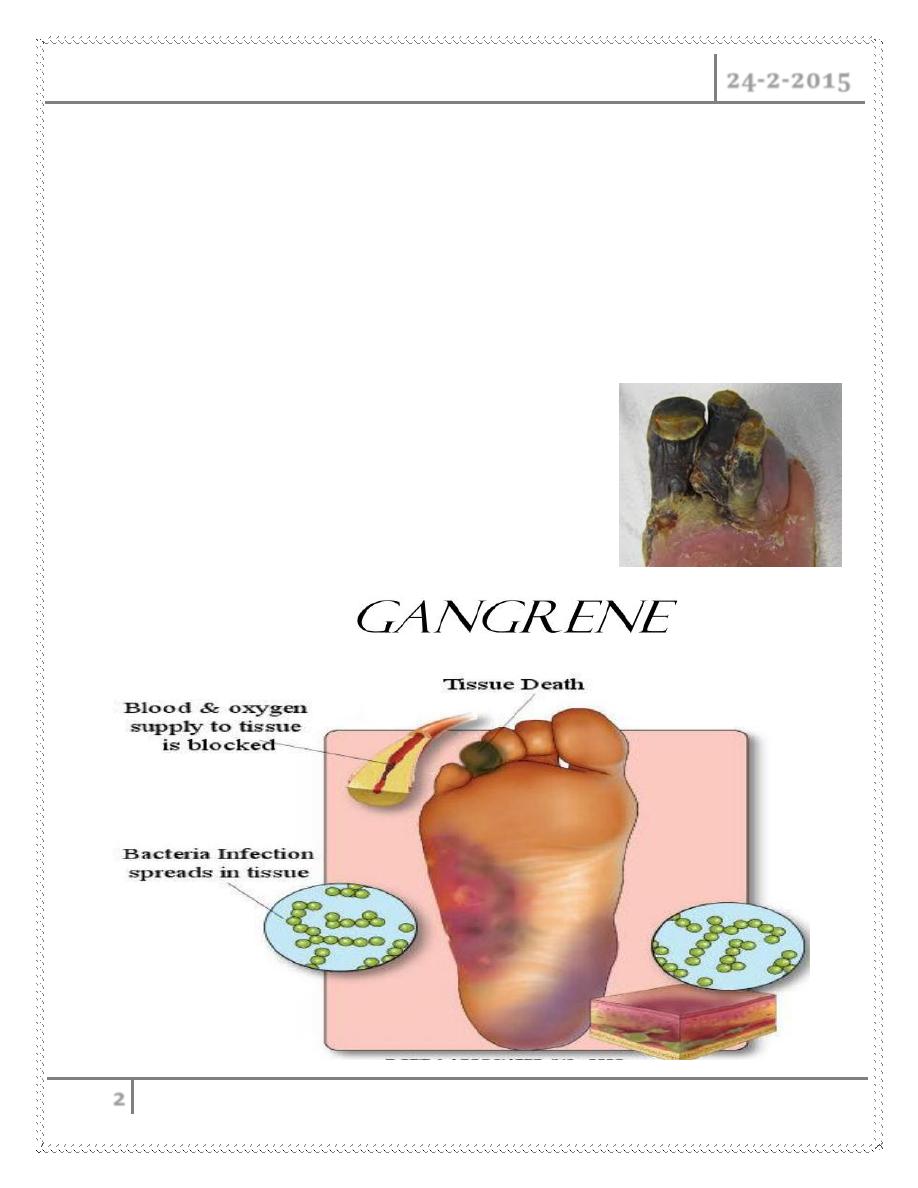
GANGRENE Dr. Aqeel Shakir Mahmood
24-2-2015
2
GANGRENE
Origin of Gangrene
The word "gangrene" comes from the Greek "ganggraina" denoting
"an eating sore that ends in mortification".
MEDICAL DEFFINITION :
Gangrene : The death of body tissue due to the loss of
blood supply to that tissue, sometimes permitting bacteria
to invade it and accelerate its decay.

GANGRENE Dr. Aqeel Shakir Mahmood
24-2-2015
3
Gangrene is a complication of necrosis “cell death” characterized by the
decay of body tissues, which become black and appearing “rotten”.
It is caused by infection or ischemia.
It is usually the result of critically insufficient blood supply.
Often associated with diabetes and long-term smoking.
Condition is most common in the lower extremities.
Blood supply when cut off → Tissues will die
Classification
It can be classified into two types according to the cause of the tissue necrosis :
Primary gangrene
Secondary gangrene
Primary gangrene
It is brought by infection with pathogenic bacteria which both
kill the tissue by secreting exotoxins and
Then invade &digest the dead tissue.
Gas Gangrene
Secondary gangrene
This type of gangrene is characterized by necrosis due to some other causes,
usually loss of blood supply from vascular obstruction or tissue laceration
and saprophytic bacteria then digest the dead tissue,
There are two types :
- Dry gangrene

GANGRENE Dr. Aqeel Shakir Mahmood
24-2-2015
4
- Wet gangrene
DRY GANGRENE
Dry gangrene begins at the distal part of the limb due to ischemia and often
occurs in the toes and feet of elderly patients due to arteriosclerosis.
Dry gangrene spreads slowly until it reaches the point where the blood
supply is inadequate to keep tissue viable.
The affected part is dry, shrunken and dark black, resembling mummified
flesh.
People with impaired peripheral blood flow, such as diabetics, are at
greater risk of contracting dry gangrene.
The early signs are a dull ache and sensation of coldness in the affected
area.
If caught early, the process can sometimes be reversed by vascular surgery.
If necrosis sets in, the affected tissue must be removed and treated like a
case of wet gangrene.
Due to gradual cut of blood supply.
The line of demarcation between dead and living tissue is clear.
The lesion remains localized.
affects bodies extremities
- arteries get blocked= tissue slowly dies
- Affected body parts feel cold and turn dark, it will dry and eventually
falling off
- Mostly affects extremities such as fingers and toes
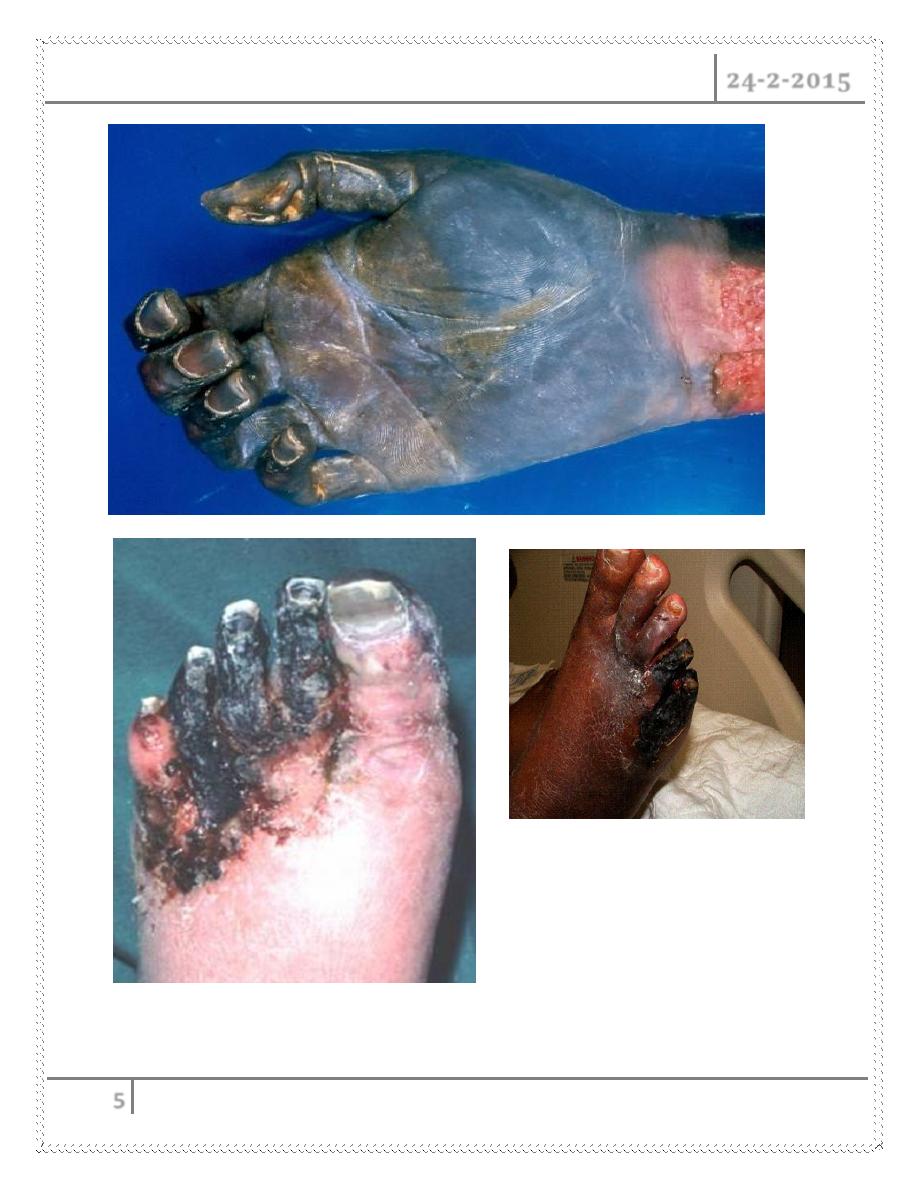
GANGRENE Dr. Aqeel Shakir Mahmood
24-2-2015
5
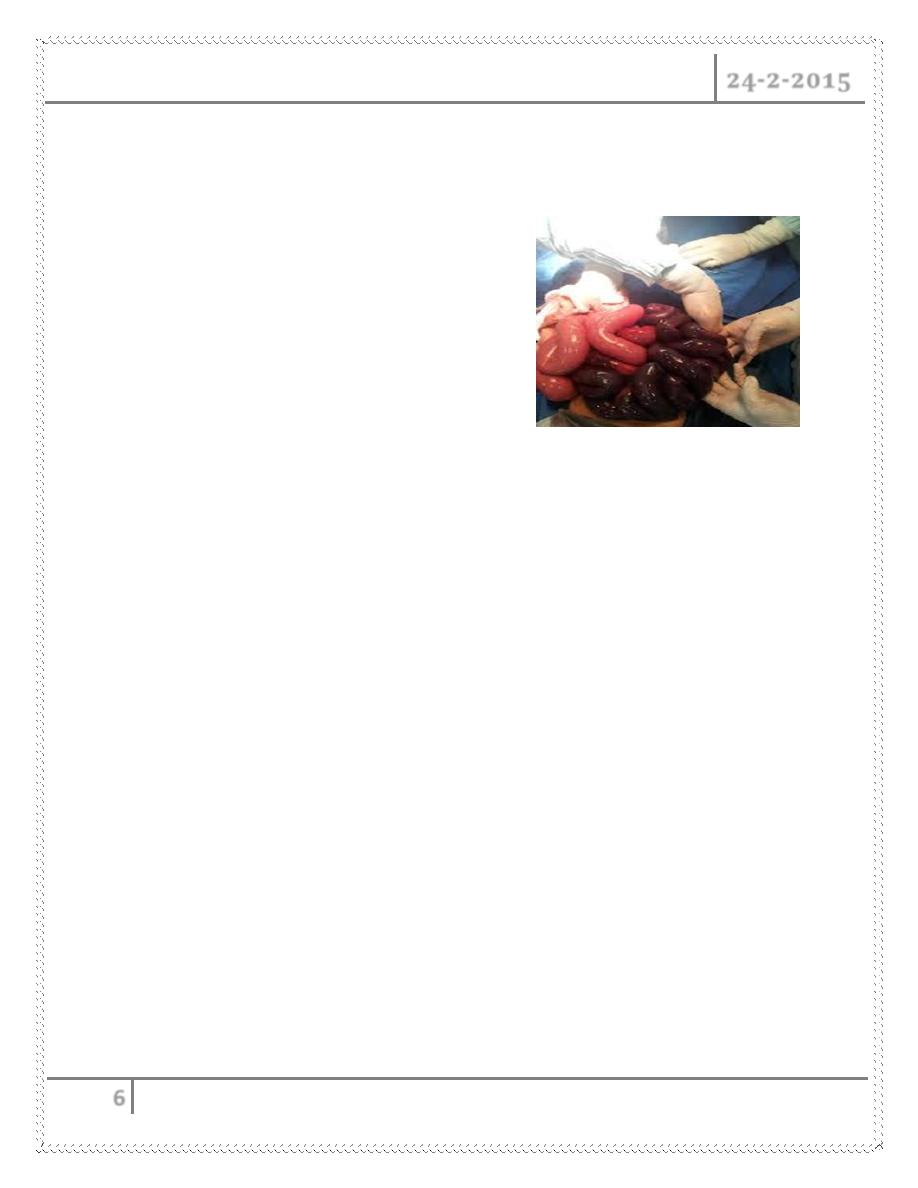
GANGRENE Dr. Aqeel Shakir Mahmood
24-2-2015
6
WET GANGRENE
It occurs in internal organs where moisture and temperature are favorable
for bacterial growth
Death occurs rapidly from septicemia,
toxemia and shock
Wet gangrene occurs in naturally moist
tissue and organs such as the mouth,
bowel, lungs, cervix, and vulva.
In intestine :
- Gangrene occurs due to malpositions e.g. volvulus, hernia and
intussusceptions
- Necrosis is due to venous obstruction and congestion
- Presence of bacteria in the intestinal ingesta allows rapid spread of
moist gangrene
Bedsores occurring on body parts such as the sacrum, buttocks and heels
(not in “moist” areas) are also categorized as wet gangrene infections.
The toxic products formed by bacteria are absorbed causing systemic
manifestation of bacteremia and finally death.
The affected part is soft, putrid, rotten and dark.
The darkness in wet gangrene occurs due to the same mechanism as in dry
gangrene.
The infected tissue are edematous due to large amount of subcutaneous
fluid.
The demarcation between dead and living is indistinct.
May extend proximally beyond the site of infection. Wet gangrene is seen in
the bowel due to mesenteric vascular occlusion and in diabetic limb.
occurs with injury and infection
- Injury restricts blood flow to the certain area
- Blood cant flow to tissue so can’t fight infection= infection sets in,
- Swelling from infection= even less blood flow= fast spreading
gangrene=life threatening
- Become swollen, discolored, and smelly.
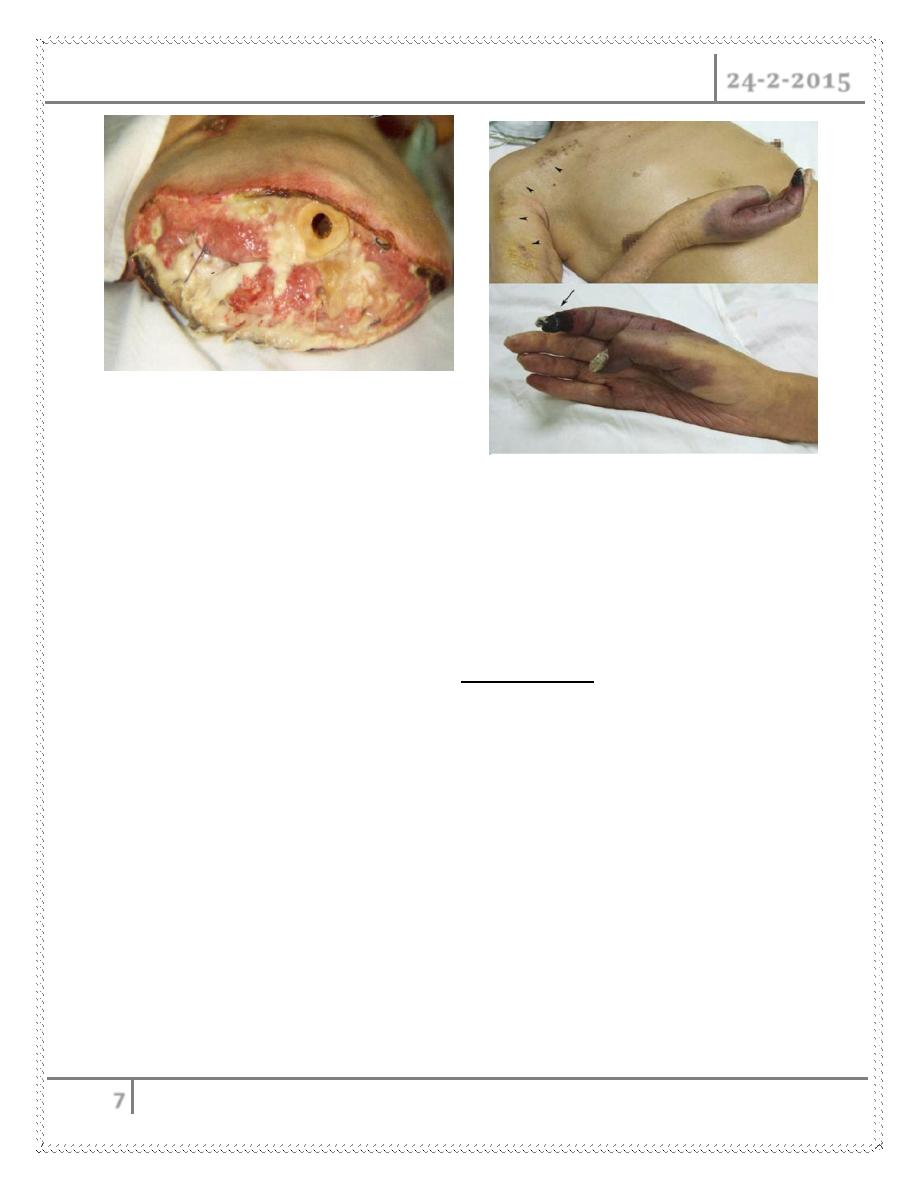
GANGRENE Dr. Aqeel Shakir Mahmood
24-2-2015
7
GAS GANGRENE
Gas gangrene is a bacterial infection that produces gas within tissues.
It is a N deadly N form of gangrene usually caused by bacteria.
Infection spreads rapidly as the gases produced by bacteria expand and
affect healthy tissue.
Gas gangrene is caused by a environmental bacteria.
These Bacteria are mostly found in soil.
These environmental bacteria enter the muscle through a wound and cause
necrosis of tissue and powerful toxins.
These toxins destroy nearby tissue, generating gas at the same time.
Gas gangrene can cause necrosis, gas production, and sepsis.
Progression to toxemia and shock is often very rapid.
Because of its ability to quickly spread to surrounding tissues, gas gangrene
should be treated as a medical emergency.
These are fatal disease conditions caused by different species of spore
forming bacteria- Clostridium (C. septicum, C. perfringens)
These organisms are anaerobic, spore forming, soil inhabitant and cause
diseases as wound infections.
Under anaerobic conditions the organisms multiply, produce toxins causing
tissue digestion like lecithinase and collagenase
The organisms produce edema and gas in the affected tissues and spread to
surrounding tissues
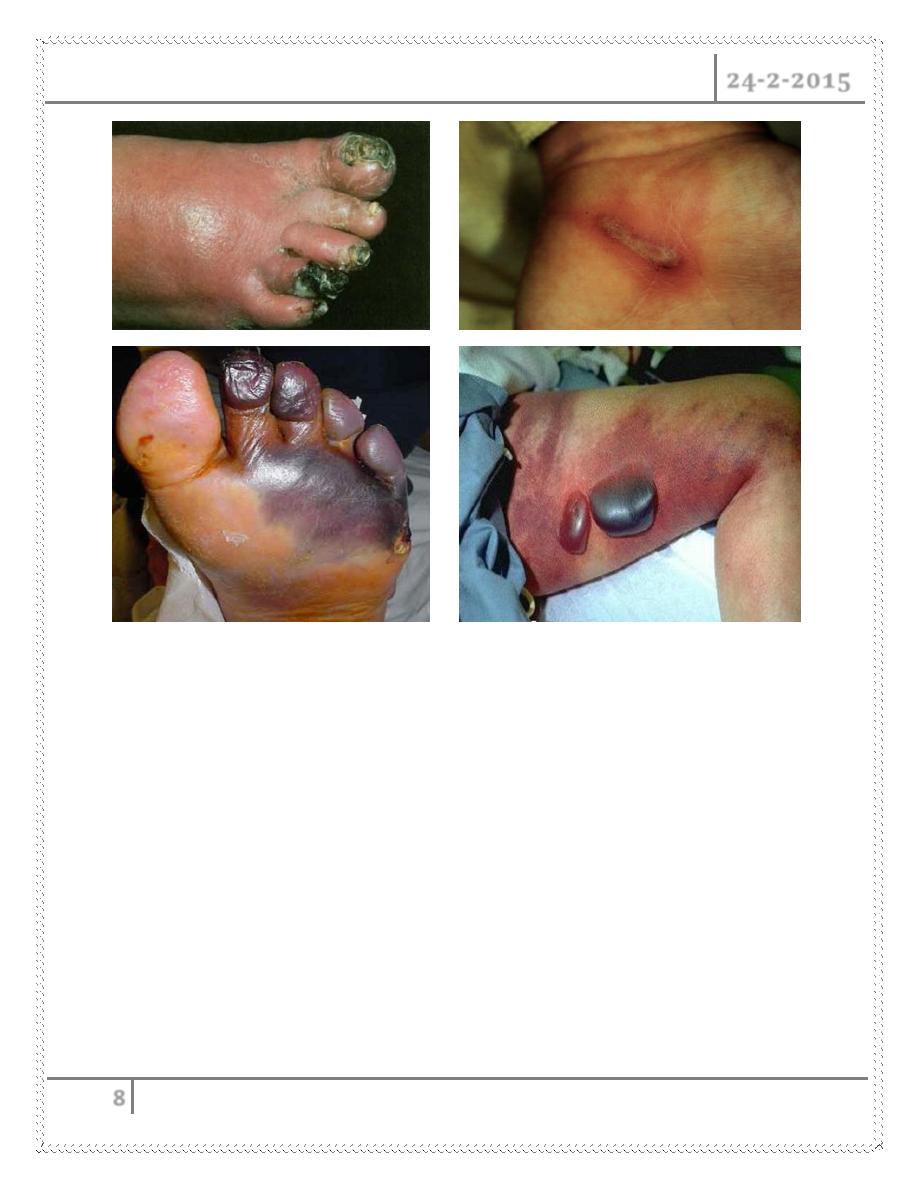
GANGRENE Dr. Aqeel Shakir Mahmood
24-2-2015
8
SPECIFIC GANGRENES
Noma is a gangrene of the face.
Necrotizing fasciitis affects the deeper layers of the skin.
Fournier gangrene usually affects the male genitals.
NOMA
Is a gangrenous disease leading to tissue destruction of the face, especially
the mouth and cheek.
Risk factors include severe protein mal nutrition and unsanitary conditions.
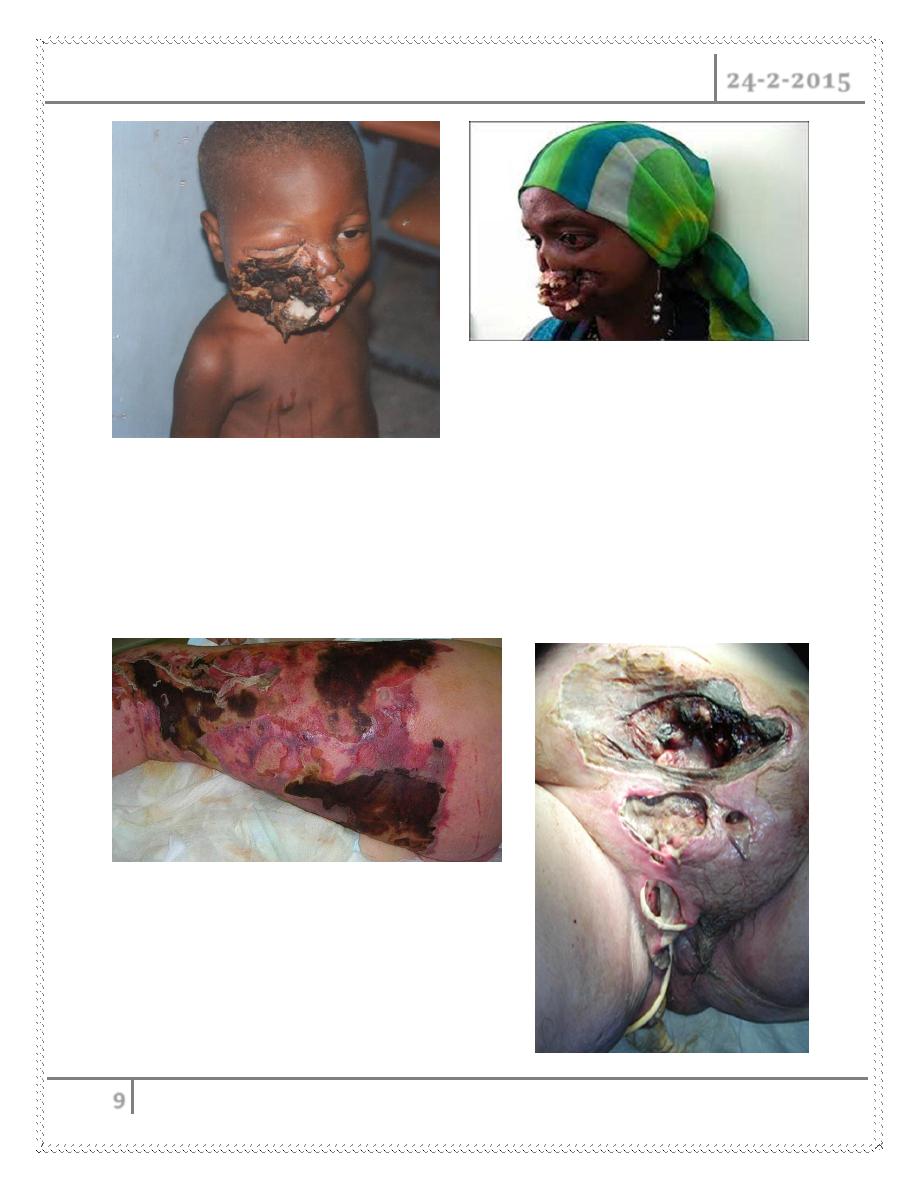
GANGRENE Dr. Aqeel Shakir Mahmood
24-2-2015
9
NECROTIZING FASCIITIS
Commonly known as flesh-eating disease or flesh-eating bacteria.
Rare infection of the deeper layers of skin and easily spread within the
subcutaneous tissue
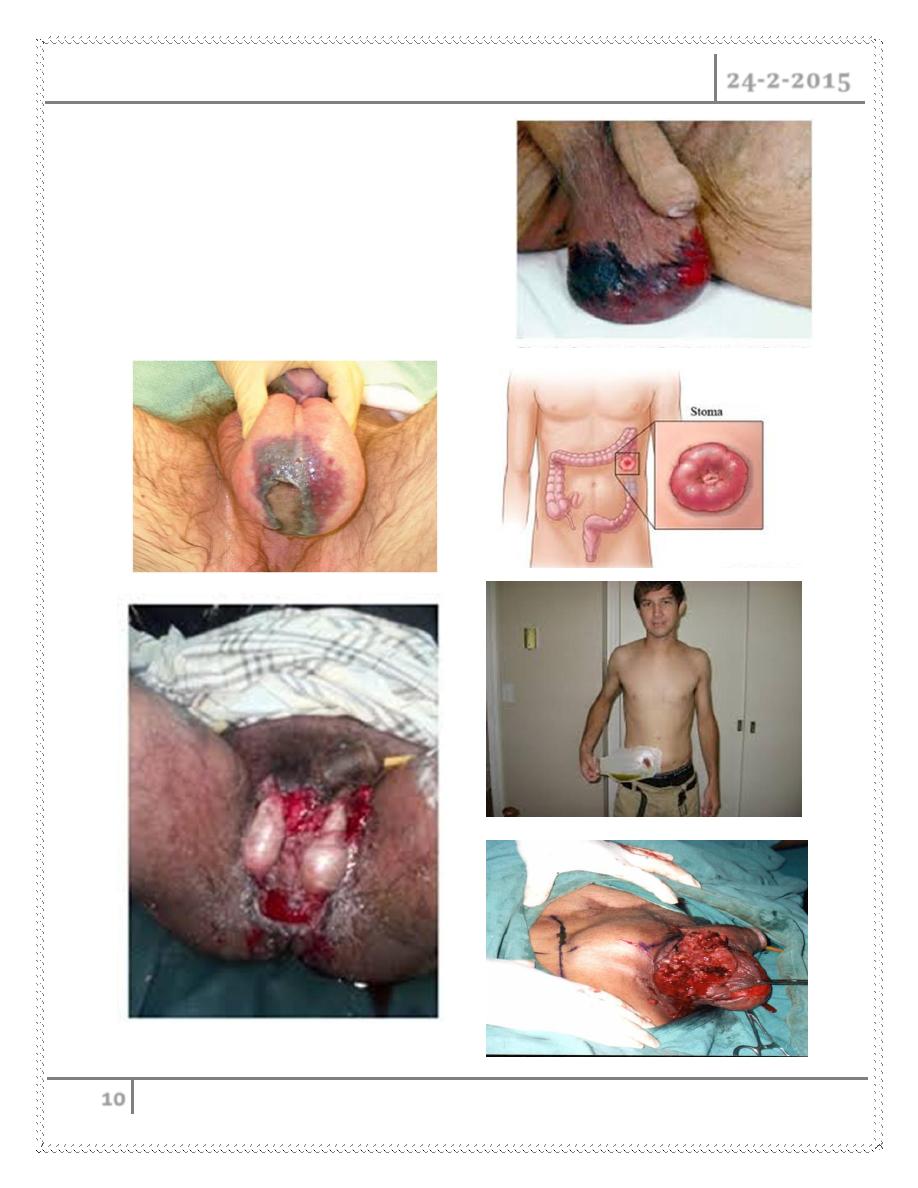
GANGRENE Dr. Aqeel Shakir Mahmood
24-2-2015
10
FOURNIER GANGRENE
A type of necrotizing infection usually
affecting the male genitals.
In the majority of cases it is a mixed
infection caused by both aerobic and
anaerobic bacteria
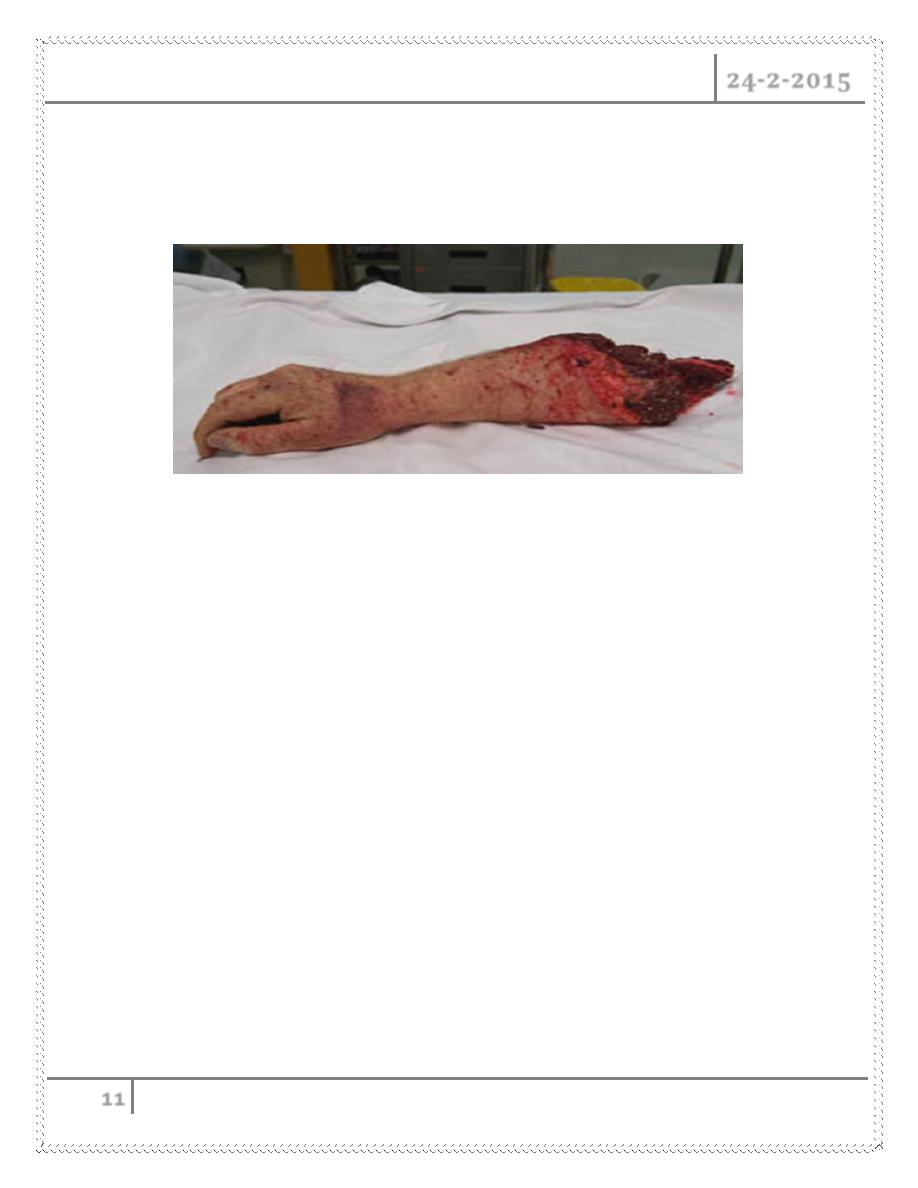
GANGRENE Dr. Aqeel Shakir Mahmood
24-2-2015
11
TREATMENT
Usually surgical with amputation necessary in many cases.
Antibiotics alone are not effective because they do not penetrate ischemic
muscles sufficiently.
The best treatment for gangrene is revascularization and restoration of
blood flow to the affected area.
Can reverse some of the effects of necrosis and allow healing.
The method of treatment is generally determined depending on location of
affected tissue and extent of tissue loss.
Results of necrosis and gangrene
Necrosis may terminate in several ways :
1- Liquefaction and removal by neutrophils, lymph or blood- (small areas)
2- Liquefaction and cyst formation- (large areas). Fibrous capsule may be
formed
3- Liquefaction , abscess formation and discharge- (invasion by pyogenic
bacteria)
4- Encapsulation without liquefaction- (coagulation and caseous necrosis)
5- Sloughing and desquamation- (on external surfaces)
6- Organization of necrotic tissue

GANGRENE Dr. Aqeel Shakir Mahmood
24-2-2015
12
7- Dystrophic calcification
8- Death of the human – usually in case of moist gangrene
#END
Done by
Ali Kareem
